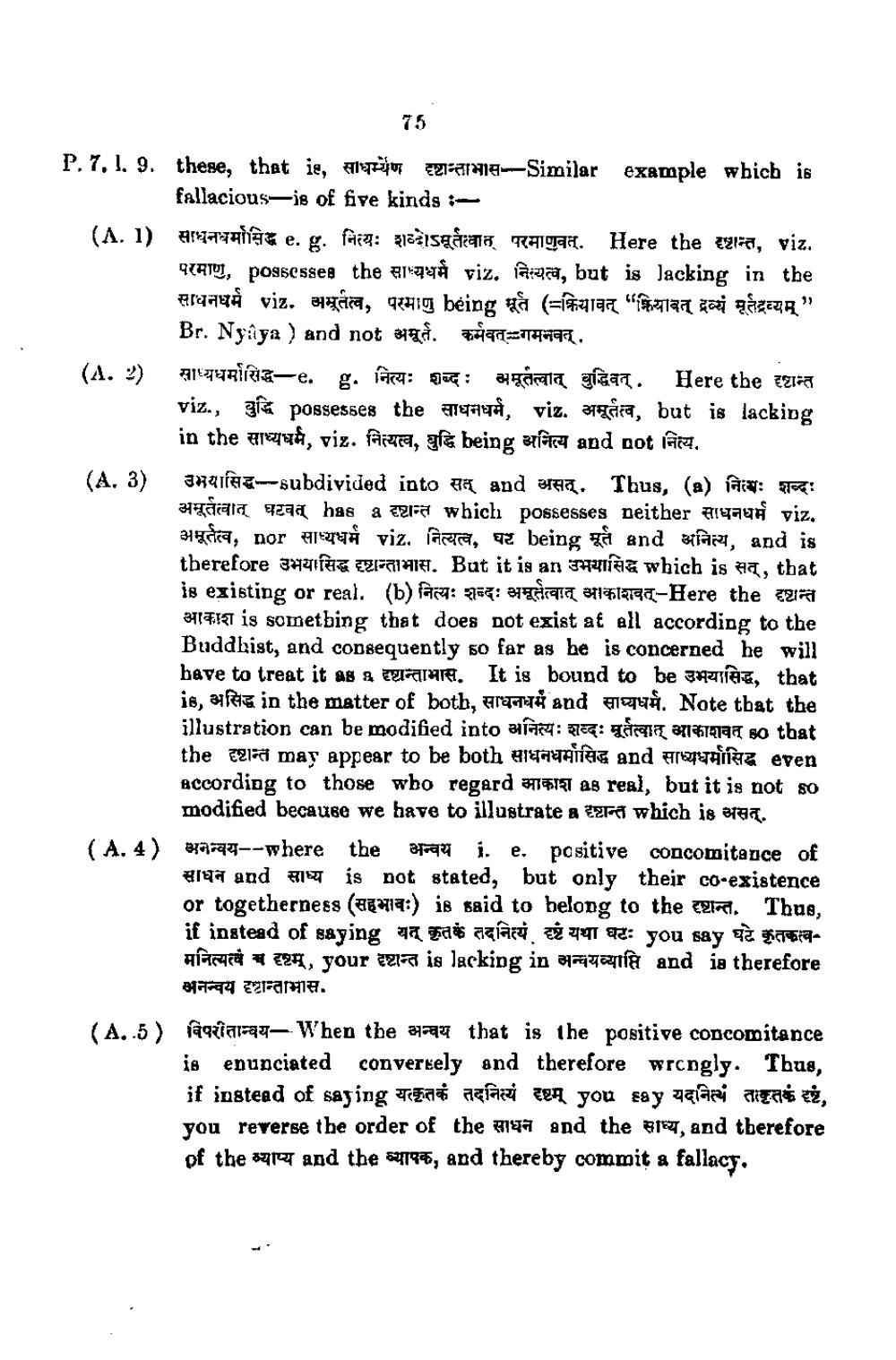________________
P.7, 1. 9. these, that is, a 2779719-Similar example which is
fallacious—is of five kinds : (A. 1) Amazhina e. g. facer: asgarantia RAQAH. Here the k2laa, viz.
परमाणु, possessea the साध्यधर्म viz. नित्यत्व, but is Jacking in the Arqand viz. ara, qaig being på (=i41a7 "$7147 zazi gazeza."
Br. Nyaya ) and not a 77=4792 (A. 2)
-e. g. la ga: armata gítar. Here the paint viz., बुद्धि possesses the साधनधर्म, viz. अमूर्तत्व, but is lacking
in the area, viz. Aizea, gft being Brity and cot cai. (A, 3) उभयासिद्ध-subdivided into सत् and असत् . Thus, (a) नित्यः शब्दः
अमूर्तत्वात् घटवत् has a दृष्टान्त which possesses neither साधनधर्म viz. अमूर्तत्व, nor साध्यधर्म viz. नित्यत्व, घर being मूर्त and अनित्य, and is therefore उभयासिद्ध दृष्टान्ताभास. But it is an उभयासिद्ध which is सत्. that is existing or real. (b) नित्यः शब्दः अमूर्तत्वात् आकाशवत्-Here the दृष्टान्त 3418.131 is sometbing that does not exist af all according to the Buddhist, and consequently 50 far as he is concerned he will have to treat it as a d are. It is bound to be 3H21E, that is, असिद्ध in the matter of both, साधनधर्म and साध्यधर्म. Note that the illustration can be modified into अनित्यः शब्दः मूर्तत्वात् आकाशवत् so that the दृष्टान्त may appear to be both साधनधर्मासिद्ध and साध्यधर्मासिद्ध even According to those who regard 7 3 as real, but it is not so
modified because we have to illustrate a which is stat. (A. 4) --where the su i. e. positive concomitance of
199 and 14 is not stated, but only their co-existence or togetherness (A:) is said to belong to the latt. Thus, it instead of saying यत् कृतकं तदनित्यं दृष्टं यथा घटः you say घटे कृतकत्वHARAC # 27, your eziz is lacking in 24atia and is therefore
877- 2ame. (A..5) agria-a4-When the way that is the positive concomitance
is enunciated conversely and therefore wrongly. Thus, if instead of saying Tag aflaai ten you say yaari dita eż, you reverse the order of the #147 and the #14, and therefore of the 217 and the 5479%, and thereby commit a fallacy.




